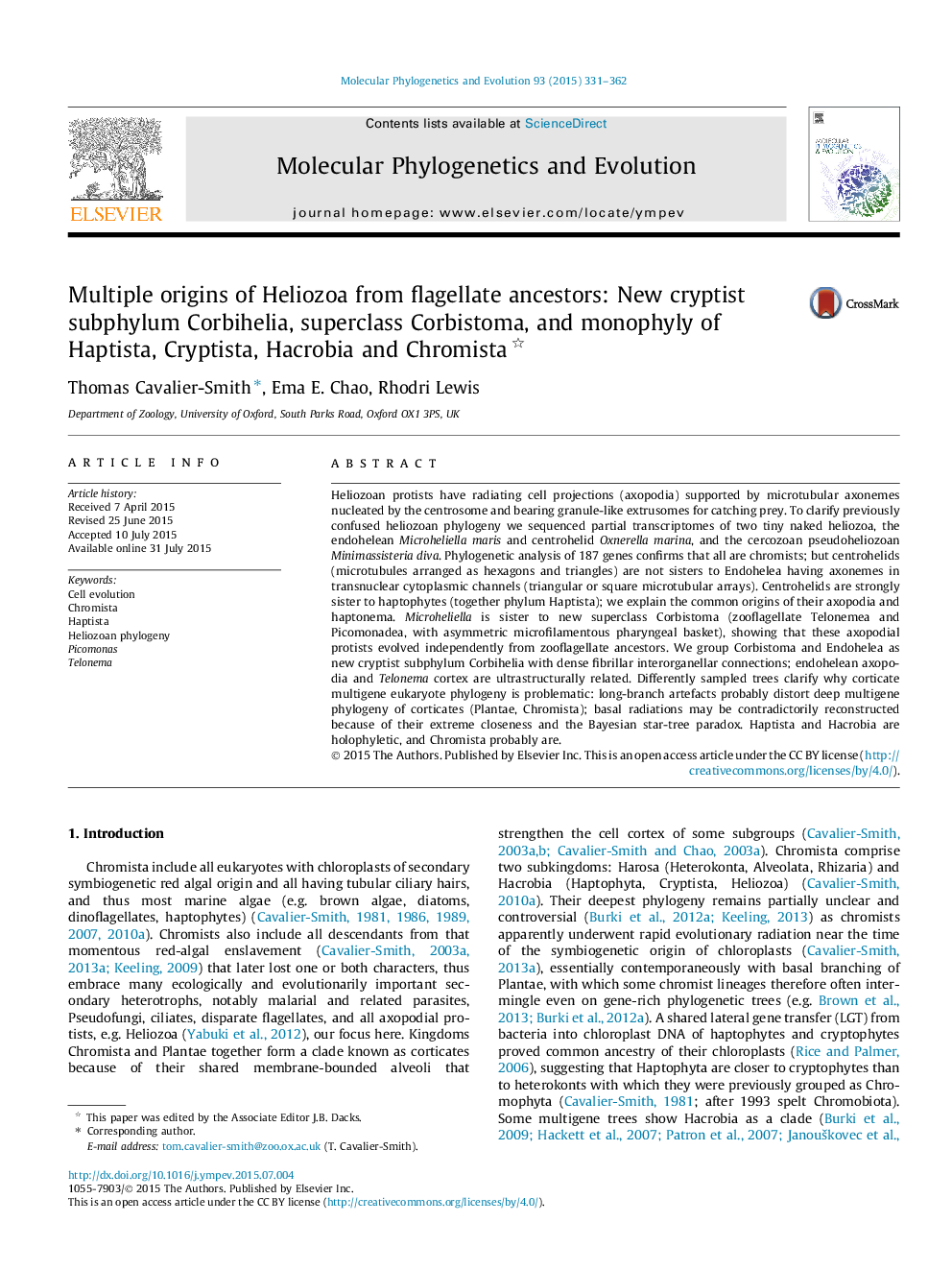| Article ID | Journal | Published Year | Pages | File Type |
|---|---|---|---|---|
| 5918695 | Molecular Phylogenetics and Evolution | 2015 | 32 Pages |
â¢Haptista (centrohelid heliozoa, haptophytes) are a clade having cell extensions.â¢Microheliella is sister to Corbistoma (Telonemea Picomonas), a new clade Corbihelia.â¢Hacrobia (Haptista; Cryptista, with Corbihelia) are a structurally coherent clade.â¢Red-algal genes distort multigene phylogeny of corticates (Plantae plus Chromista).â¢Hacrobia and Harosa are sisters; harosan long branches may hide chromist holophyly.
Heliozoan protists have radiating cell projections (axopodia) supported by microtubular axonemes nucleated by the centrosome and bearing granule-like extrusomes for catching prey. To clarify previously confused heliozoan phylogeny we sequenced partial transcriptomes of two tiny naked heliozoa, the endohelean Microheliella maris and centrohelid Oxnerella marina, and the cercozoan pseudoheliozoan Minimassisteria diva. Phylogenetic analysis of 187 genes confirms that all are chromists; but centrohelids (microtubules arranged as hexagons and triangles) are not sisters to Endohelea having axonemes in transnuclear cytoplasmic channels (triangular or square microtubular arrays). Centrohelids are strongly sister to haptophytes (together phylum Haptista); we explain the common origins of their axopodia and haptonema. Microheliella is sister to new superclass Corbistoma (zooflagellate Telonemea and Picomonadea, with asymmetric microfilamentous pharyngeal basket), showing that these axopodial protists evolved independently from zooflagellate ancestors. We group Corbistoma and Endohelea as new cryptist subphylum Corbihelia with dense fibrillar interorganellar connections; endohelean axopodia and Telonema cortex are ultrastructurally related. Differently sampled trees clarify why corticate multigene eukaryote phylogeny is problematic: long-branch artefacts probably distort deep multigene phylogeny of corticates (Plantae, Chromista); basal radiations may be contradictorily reconstructed because of their extreme closeness and the Bayesian star-tree paradox. Haptista and Hacrobia are holophyletic, and Chromista probably are.
Graphical abstractDownload full-size image
